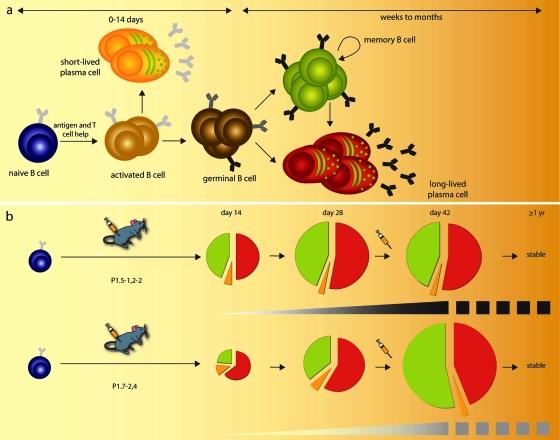FIG. 5.
PorA-specific B-cell differentiation. (a) In response to antigen and specific T-cell help, naïve B cells clonally expand and form clusters of activated B cells. These cells either differentiate into short-lived plasma cells or they initiate germinal-center reactions in secondary lymphoid tissues, where they proliferate and undergo affinity maturation and selection. GC B cells generate both long-lived plasma cells that home to the BM and produce affinity-maturated antibodies and memory B cells with affinity-maturated B-cell receptors. Memory B cells are self-renewing and replenish the pool of long-lived plasma cells to maintain long-term antibody production. (b) Naïve B cells specific for either P1.5-1,2-2 (upper panel) or P1.7-2,4 (lower panel) give rise to different B-cell dynamics (pie charts) and affinity maturation of antibodies (gray-to-black shading, where black represents high avidity) after immunization. Pie charts represent ratios and relative numbers of specific splenic short-lived plasma cells (orange), splenic memory B cells (green), and BM plasma cells (red) at different time points of the immunization schedule. Cell numbers, ratios, and avidity indices at day 42 are stable for at least 57 weeks (T. Luijkx, unpublished data).

